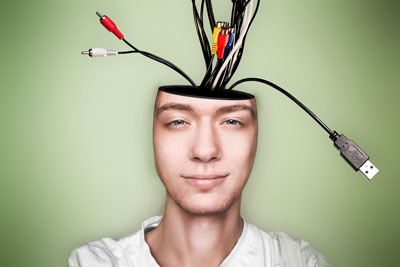
 |
The Forbidden Sentient Computer: CLICK HERE to Link to Full Paper. With 139 references to the literature. Published in an open-access journal from the |
LAY LANGUAGE ABSTRACT
The only people who have an objective and scientific understanding of consciousness are the physicians who deal with it every day, especially neurologists and anesthesiologists. But everyone talks about it based upon their own subjective experience.
What most people who lack medical training mean when they use the word "consciousness" is something known as waking consciousness. It is what you, the reader, are experiencing right now. It is at one end of a broad spectrum that extends all the way down to minimally conscious. In other words, something can't be conscious unless it experiences a spectrum of consciousness that includes lucid dreams and comas.
Contrary to what many people take for granted, consciousness is not a form of intelligence, artificial or otherwise. The device whose screen you are reading this on is probably more intelligent than a cow since, for example, a cow cannot do calculus or prove theorems but a modern computer can. Yet, there is no medical basis for claiming that a computer can experience consciousness while a cow certainly can.
The scientific reason we can know that other people experience a spectrum of consciousness is the Theory of Mind (TOM) from developmental psychology. In essence, TOM is
the axiom that like causes produce like effects. By the age of five, a normal child has been observing other people long enough to realize that they are just like him or her, and therefore, share the same mental experiences. No matter how well a computer—like the iconic HAL in Space Odyssey 2001, mimics human consciousness, TOM cannot be used to conclude that a computer experiences a spectrum of consciousness because no normal child would mistake a computer for a living being that is just like him or her.
However, TOM could be used to conclude that an ideal android experiences spectrum consciousness. The problem here is that, unless some of history's most famous mathematicians are wrong, a system can't successfully examine itself. This means that not only do we currently not know how the brain causes consciousness, we may never know it. Consequently, it would be a daunting task to build an android that would allow us to conclude scientifically that it experiences a spectrum of consciousness. We would need to know how the 100 billion neurons in the human brain are interconnected, and then replace all 100 billion neurons with electronic switches connected in the same way.
